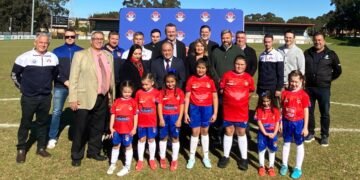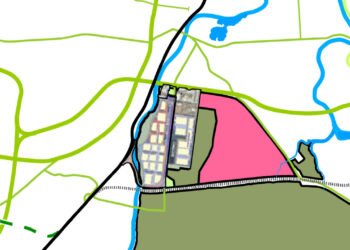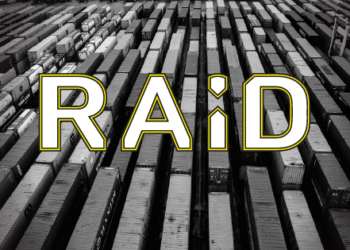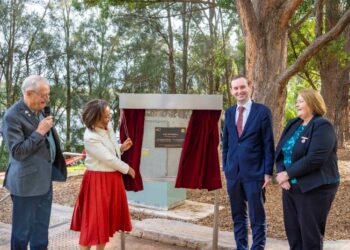Take Two with Eric North
We welcome back a familiar voice to 89.3 2 GLF this week —Mr. Eric North from RAID Moorebank Inc.—for an extended segment of The Pulse. What started as a catch-up quickly spiraled into a jaw-dropping exposé on politics, money, and ego, with the spotlight firmly on the controversial and duelling Moorebank Intermodal projects along the Georges River in East Liverpool. This wasn’t just a chat; it was a call to arms for anyone who’s ever felt the ground shift beneath their feet, due to decisions made in far-off boardrooms. Let’s dive into the muck and mire.
Setting the Scene: A Tale of Unanswered Questions
Right off the bat, I made it clear this wasn’t going to be a fluffy chat, because “there’s questions here that are unanswered,” in this story and the events putting Liverpool through the rigger. Eric North, our guest, with a knack for digging into the gritty details, picked up where we left off from the previous week’s show (available on the station’s On Demand system). What followed was a masterclass; peeling back the layers of a complex saga—one that ties together historical industrial battles, government missteps, and freight projects that defy logic and thousands of rightfully concerned locals and their objections via the NSW Planning Portal.
A Blast from the Past: The Patrick Stevedore Scandal
North kicked things off with a history lesson that felt more like the plot to a thriller. He took us back to April 7, 1998, when under the cover of darkness, boats loaded with guard dogs and balaclava-clad security guards stormed Patrick Stevedore’s wharves across Australia 1 —not just at Melbourne’s Webb Dock, as he’d previously described, but everywhere, from Port Botany to each port around the country. This wasn’t a random act; it was a coordinated strike dubbed “Corrigan’s Cabal,” 2 involving ex-military personnel taken to Dubai and trained for this very mission. The goal? To sack 1,400 union workers and replace them with non-union labour, all with the apparent nod of the Howard Government 3. Eric’s voice crackled with intensity as he read from ABC reports, painting a picture of a blatant attack on workers’ rights. “This is the mentality we’re dealing with,” he warned, linking this ruthless mindset to the broader narrative of corporate greed and political complicity that does not just linger on today, but powers the moves made, to make sure intermodals would be forced onto riverfront land at Moorebank.4
From Ports to Politics: The Moorebank Intermodal Mess
Fast-forward to the early 2000s, and Eric shifted gears to the heart of the matter—Moorebank. He traced the origins of the intermodal project, a freight hub meant to ease congestion by shifting containers from trucks to rail. The state government set an ambitious target in 2003: 40% of containers leaving Port Botany by rail, up from 20% 5. Sounds good, right? But here’s where it gets murky. Eric, wielding hefty reports like the Cleland Report (2003) 6, the NSW Upper House Inquiry (2005) 7 the (FIAB) Freight Industry Advisory Board 8 —revealing just how stacked the latter was with logistics bigwigs but light on planners or environmentalists—pushed a business wishlist over public good.
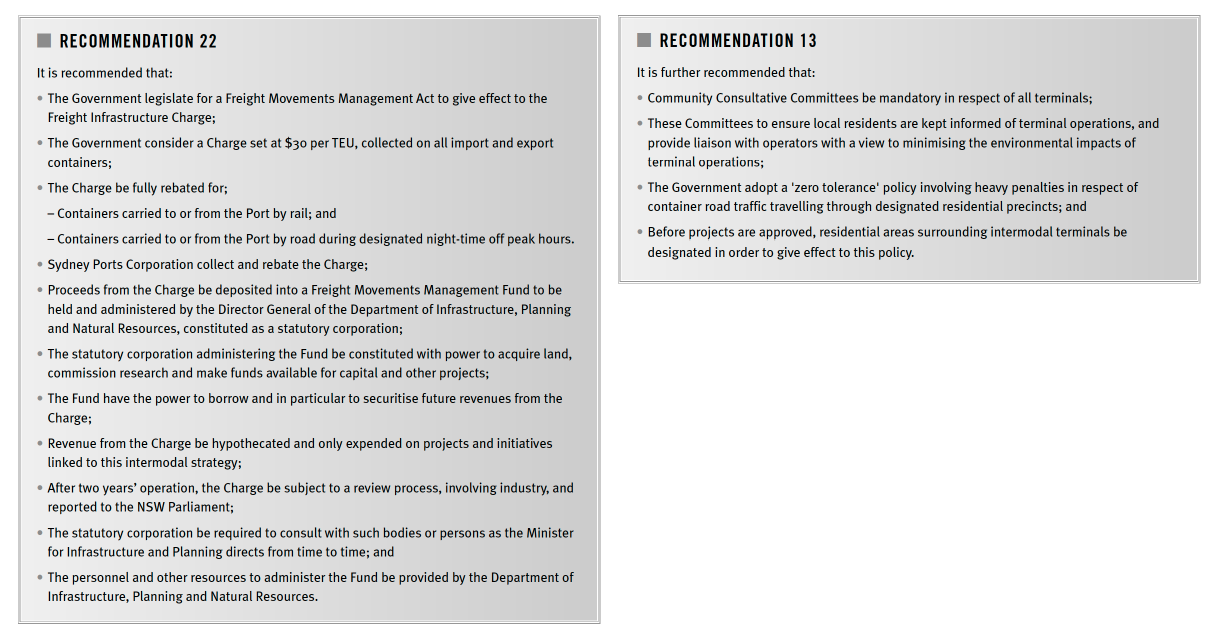
Good recommendations, like a statutory body to implement surcharges to fund and manage delivery of rail infrastructure, or a zero tolerance policy for intermodal trucks on residential roads, were ignored or stifled. Bad ones? They became cover for submitters to the process to move forward with applications for their projects turned recommendations. And guess who was on that board? Transurban, among others, raising concerns about unending privatisation over and above the goal of good governance and planning. North didn’t hold back, calling out the “disease of politics” that keeps everyday Aussies too busy or overwhelmed to notice these backroom deals. “We’re all just in this phase of dis-ease,” he mused, describing a dog-eat-dog Sydney where courtesy is dead, and tollways trap us under —endless fee-for-ever-worsening-service credit bleeps. Steamed, I could barely contain my frustration as Eric dropped bombshell after bombshell.
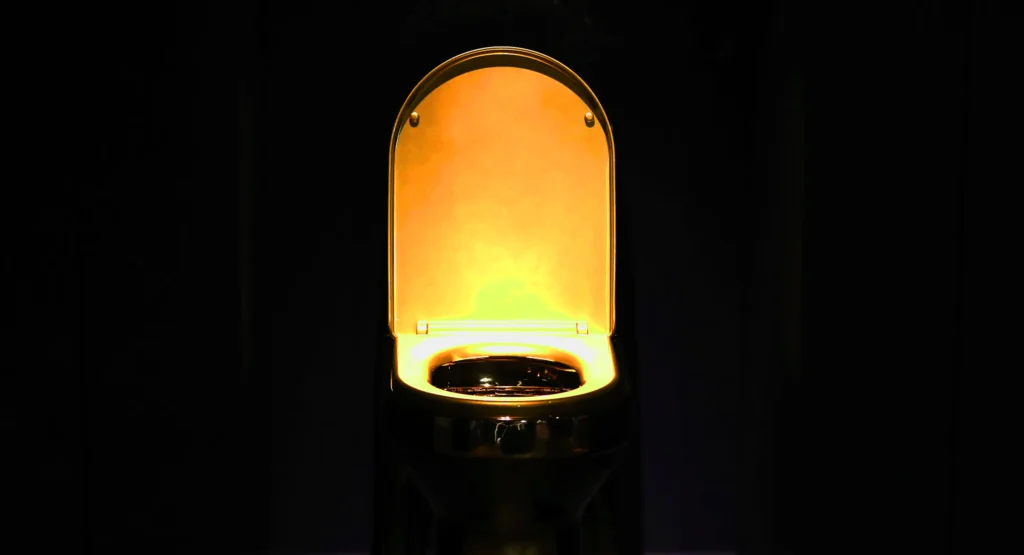
Moorebank: not your average Gold-Plated Disaster
The real kicker came as Eric likened the dual Moorebank Intermodals to a “Trumpian gold-plated toilet without the plumbing.” Despite proximity to motorways and rail lines, it’s a terrible location—already congested roads and tracks can’t handle the extra load. Worse, rail mode share had actually plummeted from 20% to 12% in the decade since the policy target was set. Proving the issue isn’t a lack of terminals but a lack of rail infrastructure at and from Port Botany. With Duplication of the rail line at Port Botany, the NSW government could have hit that 40% by 2010-12; without ever talking about, let alone following through, with wasteful destruction of 300 plus hectares of prime riverfront land. And so, without the necessary “plumbing” of rail infrastructure and relevant incentive schemes we are already stuck with more trucks clogging the M5 and Hume Highway and ought to expect thousands upon thousands more. “Shit is gunna go everywhere,” quipped Eric, earning a chuckle from me even as the gravity of the situation was starting to sink in.
North also foreshadowed a discussion on appropriate market driven alternatives such as Eastern Creek, the number one option, which per government literature is the destination for 30% of Port Botany’s containers. Or the historical missed opportunity at Camellia, the number two option, and the only container terminal north of the parramatta river, which was shut down for lack of reliable rail access. North explained “a draft three-port strategy—splitting freight across Newcastle, Port Kembla, and Sydney—could slash truck numbers on the Sydney road network by up to 50% 9. Instead, intermodals at Moorebank must necessarily become a double-handling nightmare, with freight arriving only to be transshipped out again by road. And the projections? Laughable. North pointed out a 272% freight increase 10 against a mere 30% in population growth 11 over 20 years from 2011. “We’d each need to buy 10 fridges just to keep up,” poked Eric, before describing the sobering reality of planned obsolescence, landfill and corporate rent-seeking.
In the Air Tonight…and every night ever after…
Coming back from Phil Collin’s break out single, I was prompted to think on the darker days ahead, when Eric verbally smacked me in the face with reality. Teasing a future discussion on what’s “in the air” at Moorebank—being a carcinogenic future that risks potentially a ‘surprise’ cancer cluster for current and following generations. Leaving listeners hanging, Eric promised more revelations in coming weeks on why the architect of raid on ports workers, Chris Corrigan, had pushed for an intermodal at this location and why the government was sucked in, despite developing clear evidence that it does not stack up.
Why You Should Care
This wasn’t just radio; it was a wake-up call. Eric is painting a vivid picture of a community caught in the crosshairs of profit-driven decisions, from union-busting raids in ‘98 to a freight hub that represents undue burden; more boondoggle, than boon. If you’re in Liverpool, or anywhere touched by Sydney’s sprawling supply chains, this affects you. Traffic’s building, air quality’s at risk, and the powers-that-be seem more interested in the quarterly profits of private interests than in your daily grind, your local amenity or your long term health outlook. As Eric put it, unless you’re a paid lobbyist or a bit “nuts” like him, who’s got time to wade through reams and reams of government information?
Final Thoughts: Tune in next time to The Pulse on 89.3 2GLF. If this segment was anything to go by, Eric North’s got more dirt to dish, and I am committed to making sure the wider community is well informed. Don’t let this story slip through the cracks—Liverpool’s future’s on the line, and it’s up to us to demand answers.
- See ABC Rewind ↩︎
- See AFR and AFR ↩︎
- See SMH ↩︎
- See Michael West Media ↩︎
- Per Port Freight Plan on 13 December 2004; p.30 of the “Cleland Report” ↩︎
- Download the Cleland Report here if interested ↩︎
- Download the Inquiry Report here if interested ↩︎
- Download the FIAB Report here if interested ↩︎
- Based on reviewing Publications by and for Port of Newcastle. ↩︎
- Per Infrastructure NSW (2012) p.38
* note correction of 272% not 290% per the recording ↩︎ - NSW Planning Projections (2011–2031)
* note correction of 30% not 29%
See “Towards a resilient Sydney – Socio-economic profile“, p.5
See a breakdown of the direct data showing the majority of growth being in Western Sydney, which is best serviced by intermodals in Eastern Creek, Badgerys Creek, Douglas Park in the far southwest and Mulgrave or Schofields in the far northwest (and Camellia north of the Parramatta River). While intermodals at Moorebank are and will compete with the all the additional traffic due to urban sprawl south, west and north of M5 Georges River Bridge. ↩︎

